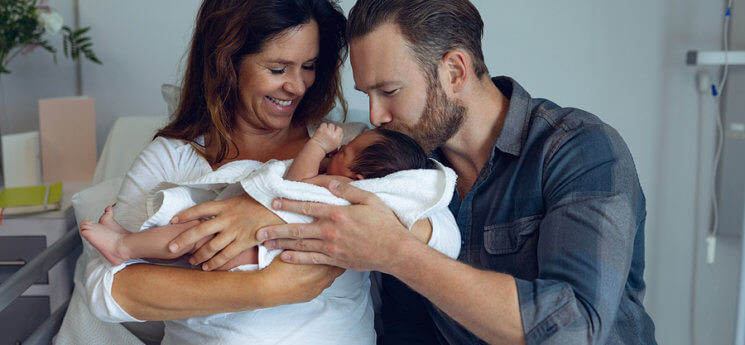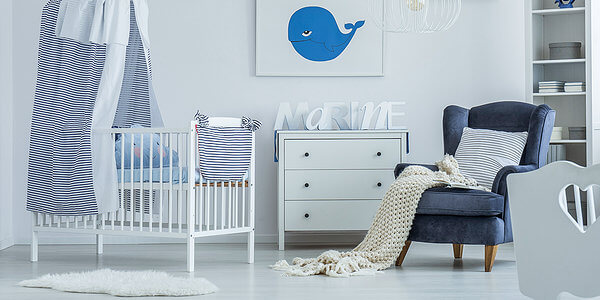What will your new baby look like? You may be expecting one of the soft, rosy-cheeked babies you see in a magazine advertisement, but just like what really happens in the delivery room, your newborn’s appearance may surprise you. Newborns tend to initially look purple, then pink, and have cute little wrinkles!
Here’s what you can expect your little bundle of joy to look like right after born.
Wet, sticky skin
You will first notice your baby is wet because he has been surrounded by warm amniotic fluid in the womb. He’ll be quickly dried off to prevent him from getting too cold. The white substance you’ll see immediately after birth on your baby’s body is called vernix. Vernix is a delicate, protective covering with a cheese-like consistency, and it feels quite sticky. This thick covering does not have to be scrubbed off; most vernix will naturally depart with the first bath.
An asymmetrical head
Your newborn’s head probably won’t be perfectly symmetrical, because the bones of the skull mold to fit through the birth canal. Interestingly, babies who are born by cesarean section usually have round heads, because they miss the birth-canal squeeze. A newborn’s head may have even areas of swelling or bruising. Bruising with no other symptoms typically resolves after a few days and is not a major concern.
Purple or pink skin
Because she has not yet taken a breath, your baby’s skin initially emerges as purple or dark red. Once you hear crying and she takes her first breath, she will appear quite pink. Variations in temperature and skin tones may foster various shades of pink.
Dark hands and feet
His hands and feet may look darker red or purple. If you notice this darker color of the extremities, try repositioning them. You will see the color change. Your baby’s blood vessels are developing, but this color change phenomenon will subside as he grows. However, if your baby’s hands and feet look purple, and his body looks purple, too, alert your doctor immediately. This could indicate a problem with not enough oxygen in the blood, which is a true medical emergency.
Jaundice
Babies often have a yellow skin tone called jaundice, because their liver is immature and they are getting rid of old red blood cells. If the jaundice is only on the face, then it is usually of no consequence. Jaundice that is more pronounced or extensive may need treatment, either in the hospital or at home. Usually jaundice begins to decline after the first week, and the yellow skin tone will gradually fade away. If you notice jaundice worsening after discharge from the hospital, your baby should be checked by your doctor to ensure no further therapy is required.
Tiny hairs
Lanugo is the first hair produced by the hair follicles in the womb. Lanugo appears as a soft, pigmented, fine hair on the back, arms, forehead, cheeks and shoulders. Lanugo is often present in full-term infants, but is more common in preterm infants. It will take about a month to shed, though many babies who are born with dark hair keep “fuzz” on their arms, face and back for many months. Some children with very thick hair will keep their hair on the back for many years.
Acne
Newborns commonly get little pimples on the face in the first couple of weeks of life. No problem: It is temporary and requires no treatment. Acne is due to withdrawal from mom’s hormones of pregnancy.
Swollen breasts
These may present on your newborn within a few days as a reaction to pregnancy hormone withdrawal, as well. They may occur in boys or girls, and are not harmful. Leave them alone; the swelling will naturally resolve on its own in about a month.
Peeling skin
Peeling is very common in newborns and is usually of no consequence. Your baby was in warm amniotic fluid that nourished her body, and is now exposed to the dry air. The skin layer underlying the peeling skin tends to be moist and soft. Lotion is not necessary, but if you want to apply some, be sure it’s unscented.
Most unscented lotions will work, but if you have a brand not clearly labeled for babies, check with your doctor. Also let your doctor know if the peeling is accompanied by dry, red skin or blisters.




